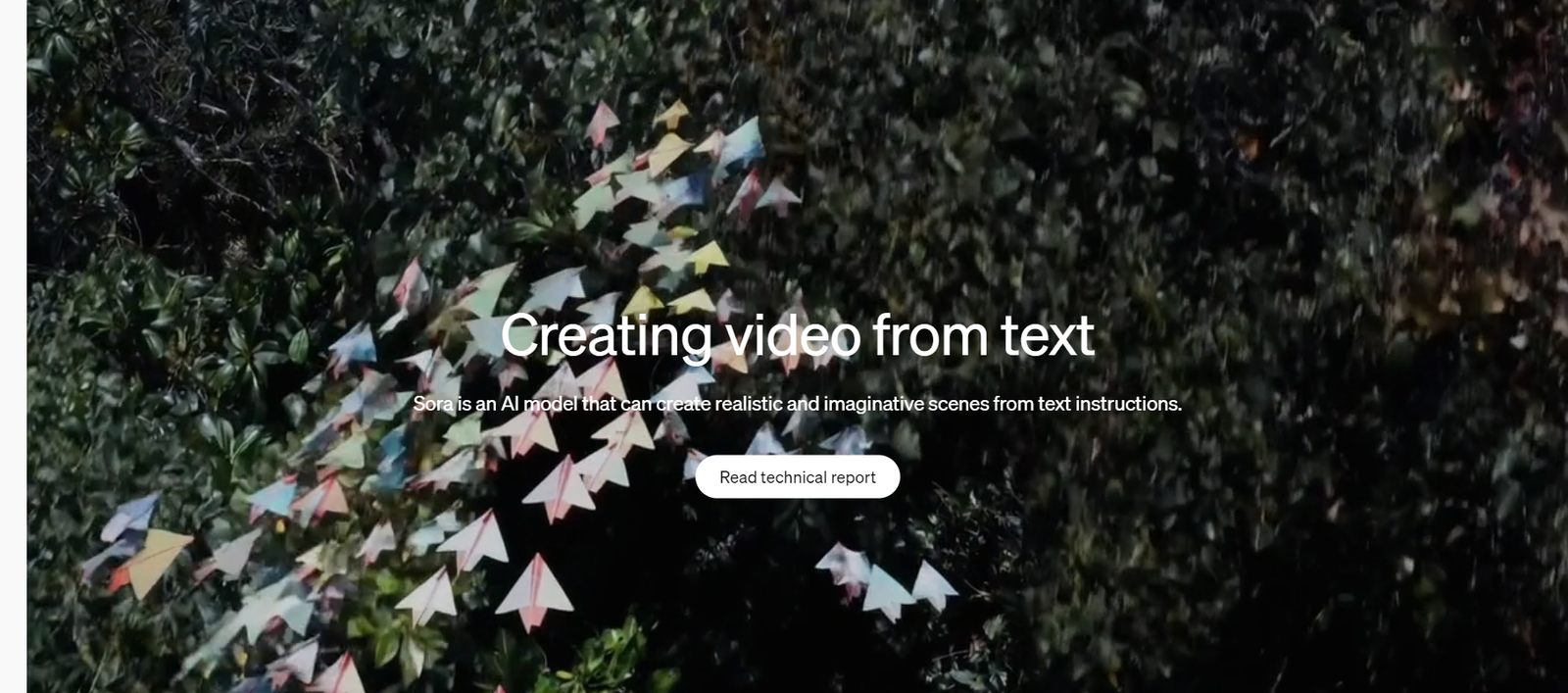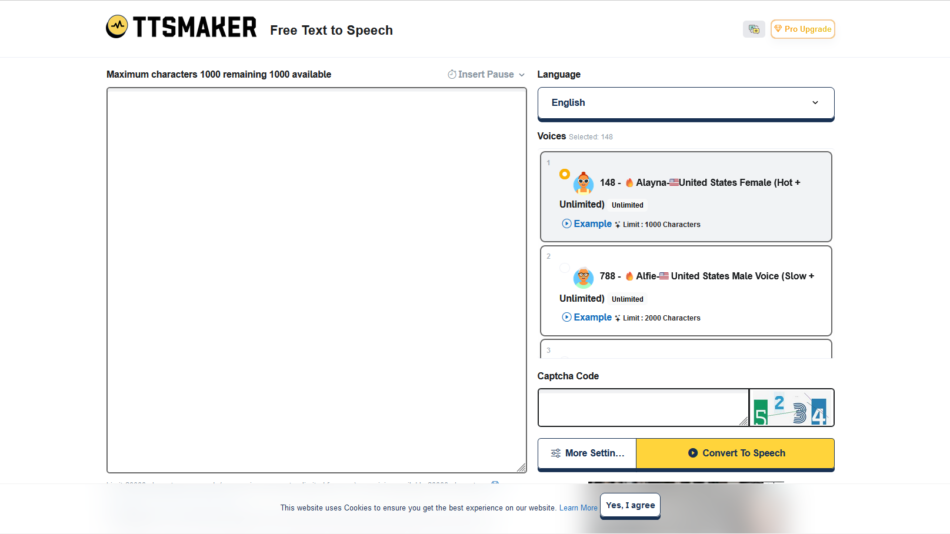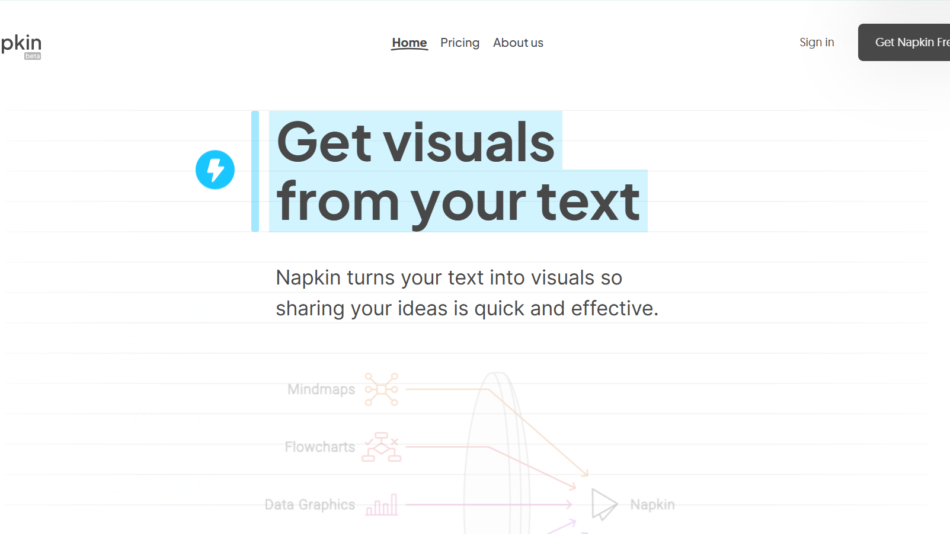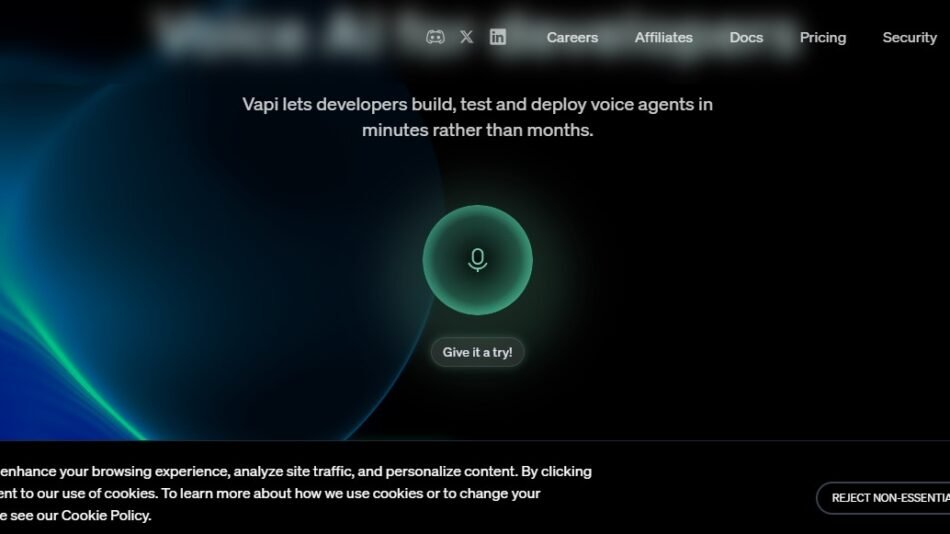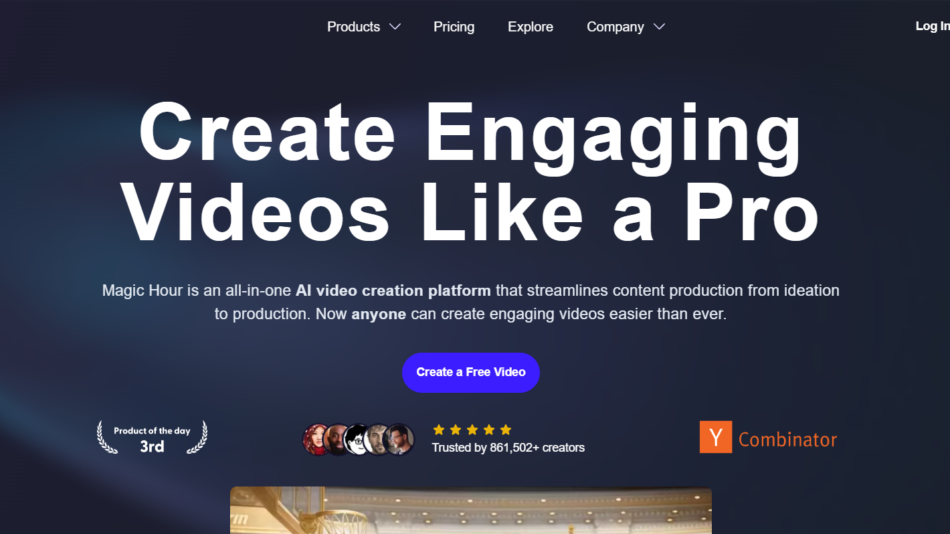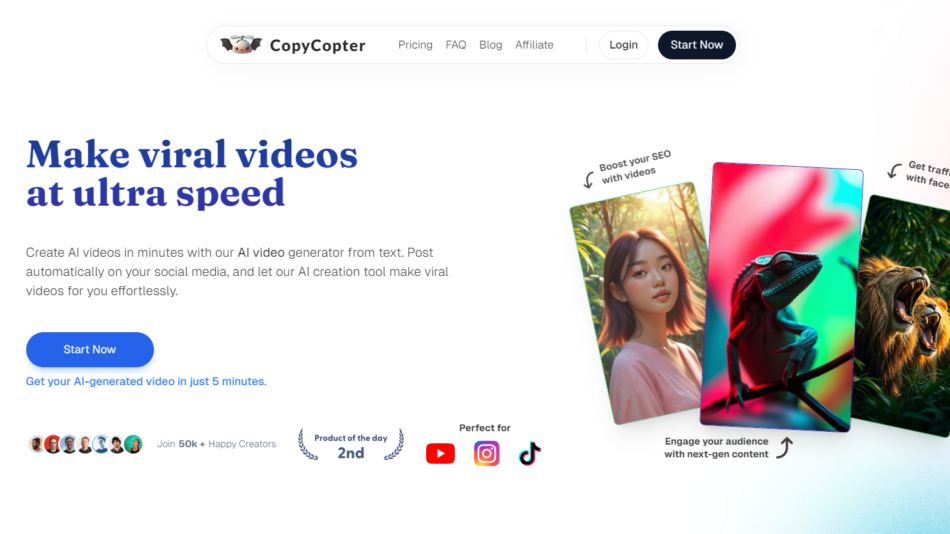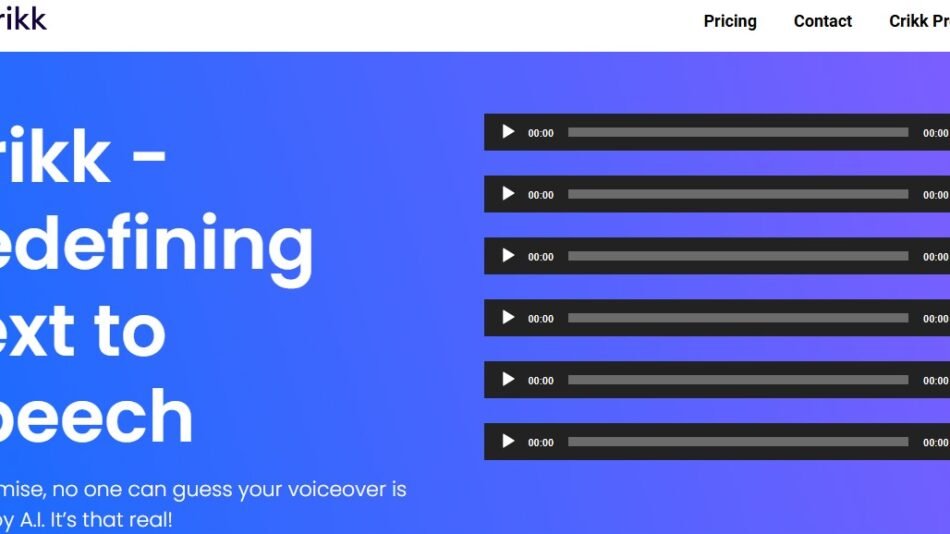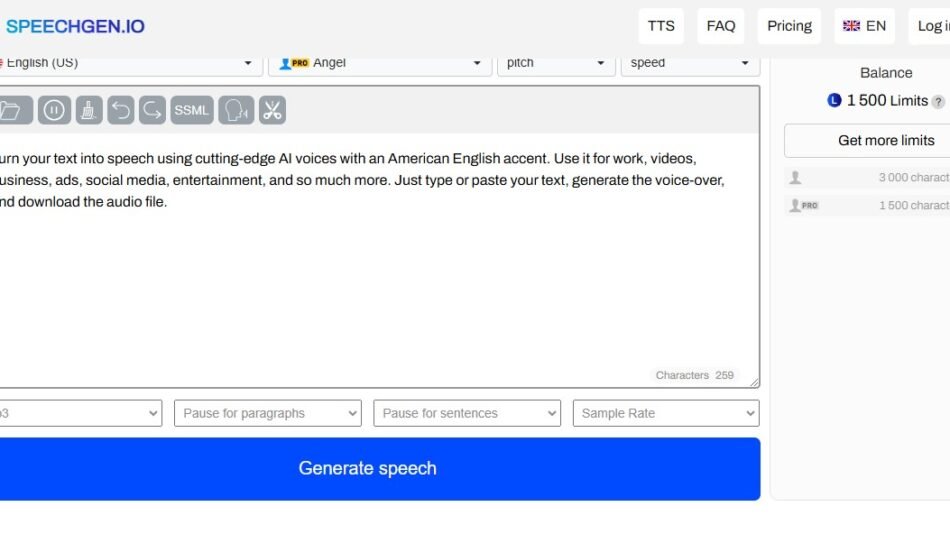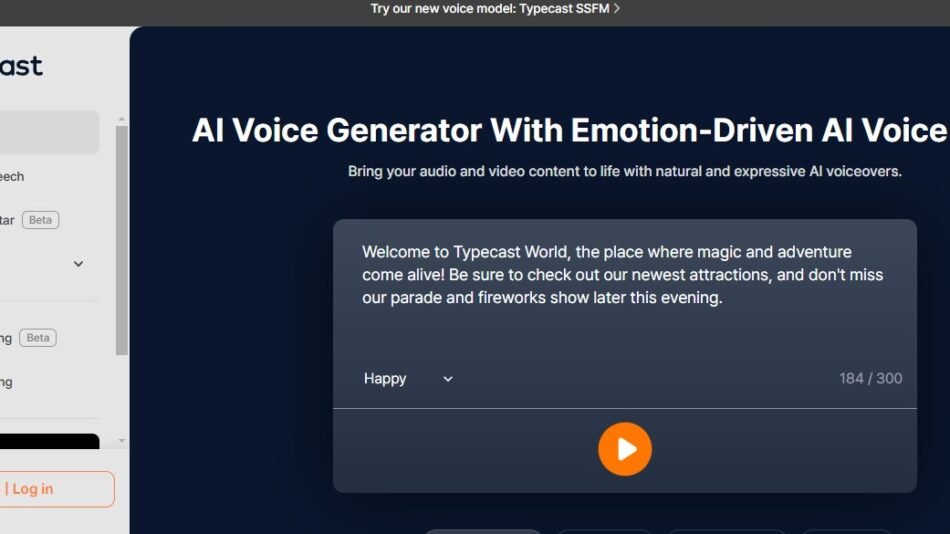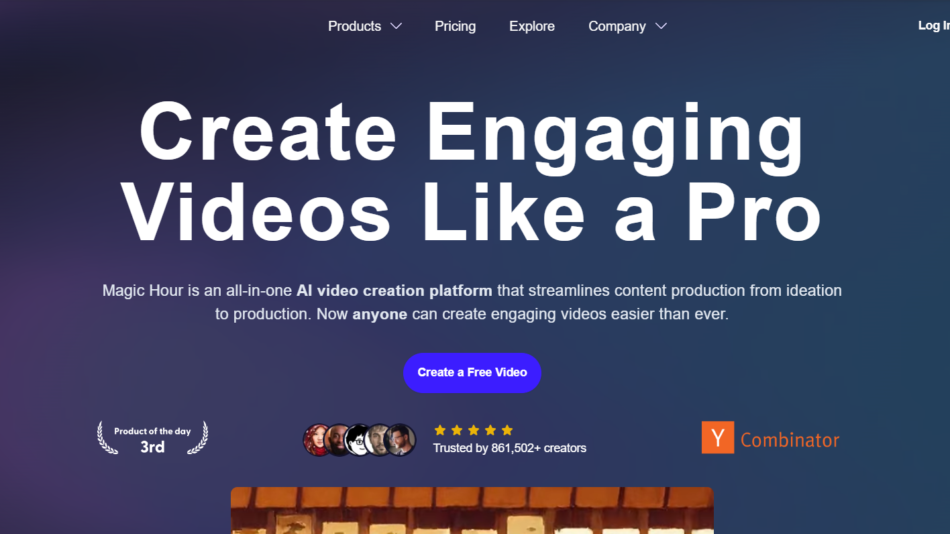Sora is OpenAI’s latest innovation in generative AI, developed as a text-to-video model that creates realistic, high-quality videos directly from text prompts. Leveraging advanced AI architectures, Sora enables users to animate both still images and video content, while also understanding nuanced spatial and temporal dynamics, making it an exciting tool for creatives, businesses, and developers. Currently, Sora is available for select users as OpenAI fine-tunes the model for safety and quality based on feedback.
Key Features of Sora
- Text-to-Video Generation: Sora translates detailed text descriptions into visually rich videos, capturing nuanced movement, interactions, and scene elements.
- Diffusion and Transformer-Based Architecture: Utilizing these models helps Sora achieve higher visual fidelity, realistic motion, and smooth transitions.
- Image and Video Animation: Sora animates static images or extends existing video footage with added elements or scenes, bringing depth to otherwise still visuals.
- Scene Composition and Multishot Capabilities: Sora supports complex scenes that can include multiple shots, camera angles, and transitions within a single prompt.
- User-Driven Testing: Currently available for limited access, Sora incorporates user feedback to refine safety protocols and improve model performance.
How Sora Works
At its core, Sora leverages diffusion models and transformer architectures to handle the intricate process of video generation from textual inputs. Here’s how each component contributes:
- Diffusion Models: These models help refine video frames by gradually enhancing low-resolution images into clearer, more defined visuals, contributing to Sora’s overall image quality.
- Transformers: Serving as the backbone for interpreting text, transformers help Sora understand complex instructions, spatial dynamics, and temporal elements. This aids in generating realistic motions, accurately replicating scene elements, and maintaining coherent interactions across frames.
Use Cases for Sora
Sora’s functionality spans various industries and creative domains:
- Advertising and Marketing: Generate engaging video content from brief text descriptions, making it a valuable tool for agencies creating product ads, social media posts, and promotional materials.
- Film and Animation: Filmmakers and animators can create storyboards and visualize complex scenes quickly, exploring new concepts without traditional rendering.
- Content Creation and Social Media: Influencers and creators can easily generate unique video content to improve audience engagement.
- Training and Education: Educational content creators can animate lessons and interactive scenarios, making learning more dynamic and engaging.
- Gaming and Virtual Worlds: Developers can use Sora to generate realistic scenes or character animations, saving time in asset creation for immersive worlds.
Pricing
As Sora is currently in a testing phase with limited access, OpenAI has not disclosed pricing. Future pricing structures may depend on usage volume, model performance, and licensing requirements. For updates, users can subscribe to OpenAI’s newsletters or follow announcements on their official website.
Strengths of Sora
- High-Quality Output: Generates visually appealing, high-resolution video content.
- Versatile Animation: Ability to animate still images and extend video footage, adding flexibility for various applications.
- Detailed Prompt Interpretation: Effectively understands and implements complex scenes, interactions, and motions.
- Cutting-Edge AI Technology: Combines transformers and diffusion models for superior video synthesis, bringing OpenAI’s latest research into practical use.
Drawbacks of Sora
- Limited Access: Currently restricted to select users, limiting general availability for now.
- Undisclosed Pricing: Lack of pricing details may hinder planning for potential users looking to incorporate Sora into their workflows.
- Safety and Ethical Concerns: As with any advanced generative AI model, Sora’s potential misuse poses ethical questions around video manipulation, content authenticity, and misuse in digital contexts.
Comparison with Other Text-to-Video Tools
Sora is part of a rapidly advancing field of text-to-video technologies, and here’s how it stands out:
- Model Architecture: Sora’s combination of diffusion and transformer architectures distinguishes it from simpler generative models, which may lack Sora’s fidelity and detail.
- Detail and Realism: While other text-to-video tools may offer more accessible or budget-friendly options, Sora’s emphasis on high quality and realistic motion sets it apart.
- Testing Phase and OpenAI Standards: Backed by OpenAI, Sora benefits from stringent testing for safety and ethical considerations, giving it a reputable edge over lesser-known models.
Customer Reviews and Testimonials
Since Sora is in a limited-access testing phase, customer testimonials are not widely available. However, early feedback suggests users appreciate the model’s ability to accurately render prompts into visually engaging content. For broader insights, potential users may refer to community discussions on platforms like Product Hunt or official forums.
Conclusion
Sora by OpenAI represents a significant leap forward in generative AI by bringing high-quality, text-to-video capabilities to a wider audience. As this technology develops, it promises to be a valuable asset across creative industries, from advertising to film, and beyond. With an emphasis on user feedback and responsible AI practices, Sora holds promise as a transformative tool for creating realistic and imaginative video content from simple text prompts.
For more information or to stay updated on Sora’s development, visit OpenAI’s official page.
